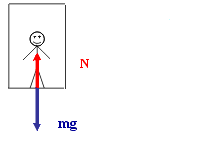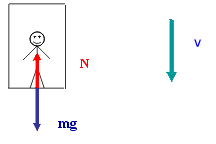Second Law of Motion Third Law of Motion Conservation of Momentum
See a collection of solved examples for this topic on our website buzztutor.com
An example
When you try to push a wall, it pushes your right back! The harder you push the more force is felt by your hands. This is what Newton's third law of motion deals with.
Third law of motion
If a body exerts a force on another, there is an equal and opposite force, called a reaction on the first body by the second.
Do the force and its reaction cancel each other? No, as they are acting on different bodies. For equal and opposite forces to cancel, they must act on the same body. In the case of pushing of the wall, the wall feels the action and the hands the reaction.
Also forces always exist in pairs. If there is a force on the wall, then there has to be a force on the hands. It is impossible to have a single isolated force.
This law is true for bodies at rest and for bodies in motion. Bodies may or may not be in contact. A magnet repels another magnet from a distance and also gets repelled right back without being in contact.
Person standing in an elevator
Let us take the case of a person standing in an elevator. Let this person be standing on a weighing machine placed in the elevator. It will be interesting to note what reading the weighing machine will show under the following conditions

N = mg
Elevator at rest
(answer: equal to the actual weight of the person)


N = mg
Elevator moving up, or down with uniform velocity
(answer: equal to the actual weight of the person)

N > mg
Elevator moving up with uniform acceleration
(answer: greater than the actual weight of the person)

N < mg
Elevator moving down with uniform acceleration
(answer: less than the actual weight of the person)
Solved Example on Third Law of Motion
A helicopter of mass 1000 kg rises with a vertical acceleration of 15 m/s2. The crew and the passengers weigh 300 kg. Give the magnitude and direction of (a) force on the floor by the crew and the passengers (b) force of the rotor of the helicopter, on the surrounding air (c) force on the helicopter due to the surrounding air. Acceleration due to gravity = 10 m/s2.
(a) Force on the floor by the crew and passengers = 300 (15 +10) = 7500 N
(b) Force of the rotor on the surrounding air
=(1000 + 300)(15 + 10) = 32500N downward.
(c) From Newton's third law of motion, the air will have an equal and opposite reaction on the helicopter rotor blades = 32500 N upward.